I live on Maryland’s eastern shore, part of the Delmarva Peninsula between the Atlantic Ocean and Chesapeake Bay. As such, one of my favorite stomping grounds is Assateague Island, a 37-mile-long barrier island that stretches along the coasts of Maryland and Virginia. Assateague Island is most well known for its herds of feral horses (Equus ferus caballus) known as Assateague horses or Chincoteague ponies. These horses were made famous in the 1947 children’s novel, Misty of Chincoteague by Marguerite Henry, and the 1961 movie of the same name.
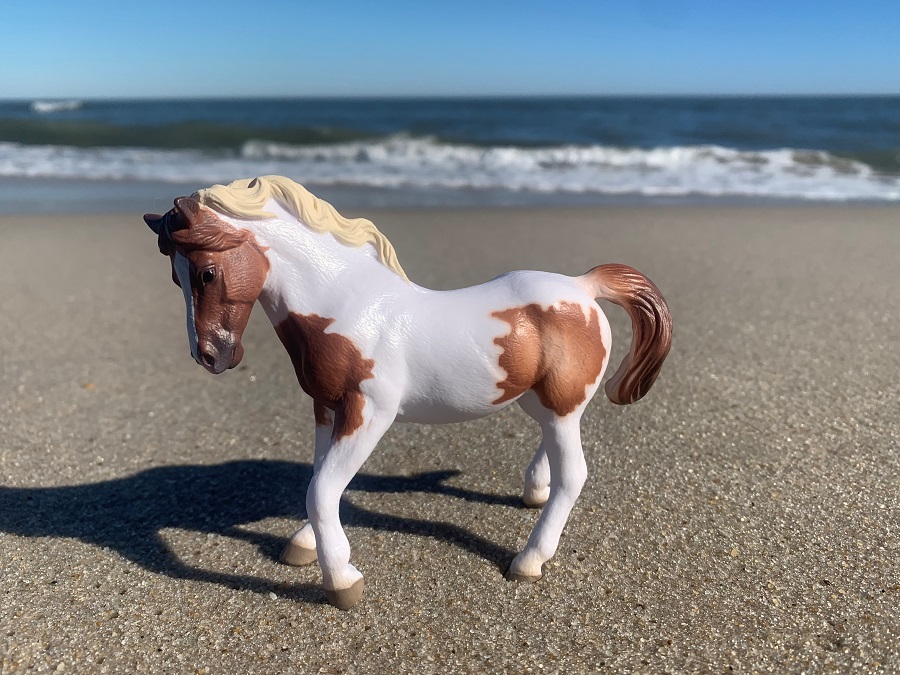
One night, while thinking about the popularity of horse figures, I got to wondering if anyone ever made a figure of these animals I encounter so frequently. And, they have. Safari Ltd. has a retired figure of the breed, and Breyer has a couple as well. But the one I went with was the 2020 Chincoteague pony by CollectA. I don’t collect domestic horse breeds but for obvious reasons I had to have a Chincoteague pony, so here we are. A note on the pictures, they were all taken on Assateague Island!
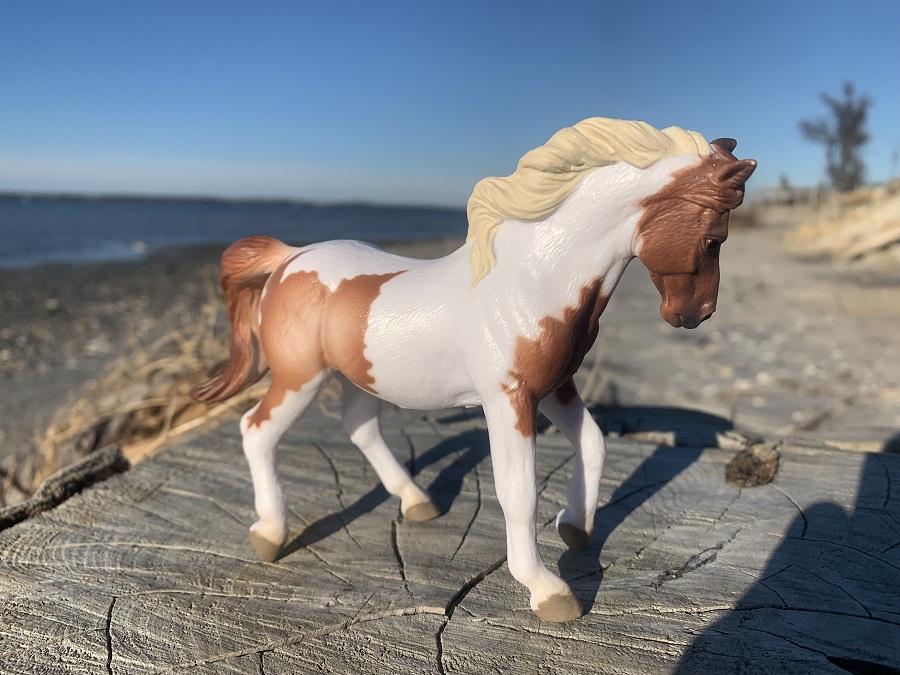
The origin of the feral horses on Assateague Island is somewhat of a mystery but the most popular story claims that they descend from the survivors of a shipwrecked Spanish galleon. There are shipwrecked galleons off the coast of Virginia, adding credence to the legend. There are also legends that they were left there by pirates. But it could also be that settlers just kept their horses on the island in order to avoid livestock laws and taxes. A less romantic but perhaps a more realistic explanation.
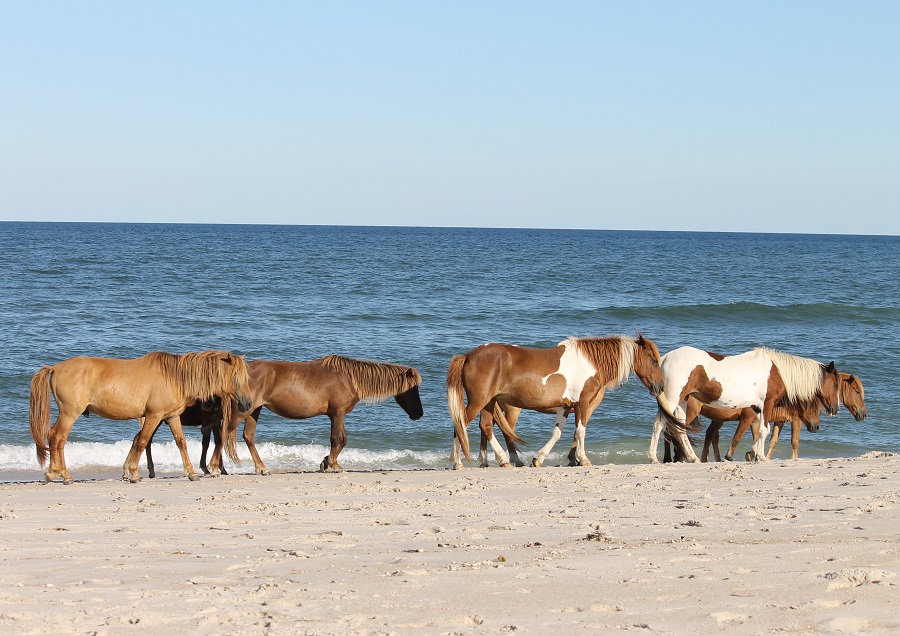
Horses on the Maryland side of Assateague are managed much differently than those on the Virginia side. In Maryland, the horses are owned by the National Park Service. They’re treated as wildlife but to manage their numbers the horses are given dart-administered contraceptives. Only a few foals are born every year and the population averages about 80-100 animals. In Virginia, the horses are owned by the Chincoteague Volunteer Fire Company. The horses breed naturally but every July they’re rounded and penned up and some are auctioned off into captivity. This pony penning event has become a popular tourist attraction in the region.
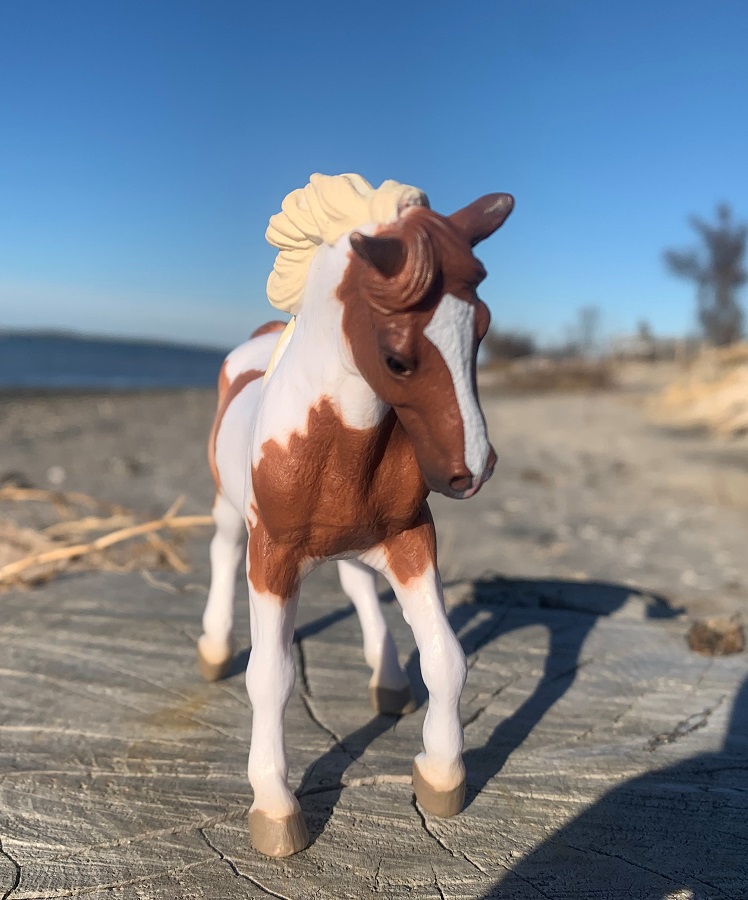
Chincoteague ponies average 13.2 hands (54 inches, 137 cm) but can reach 14.2 hands in captive situations. The CollectA figure stands 3” (7.62 cm) tall at the withers and measures 4.5” (11.43 cm) from head-to-rump. This puts the figure at 1/18 in scale.
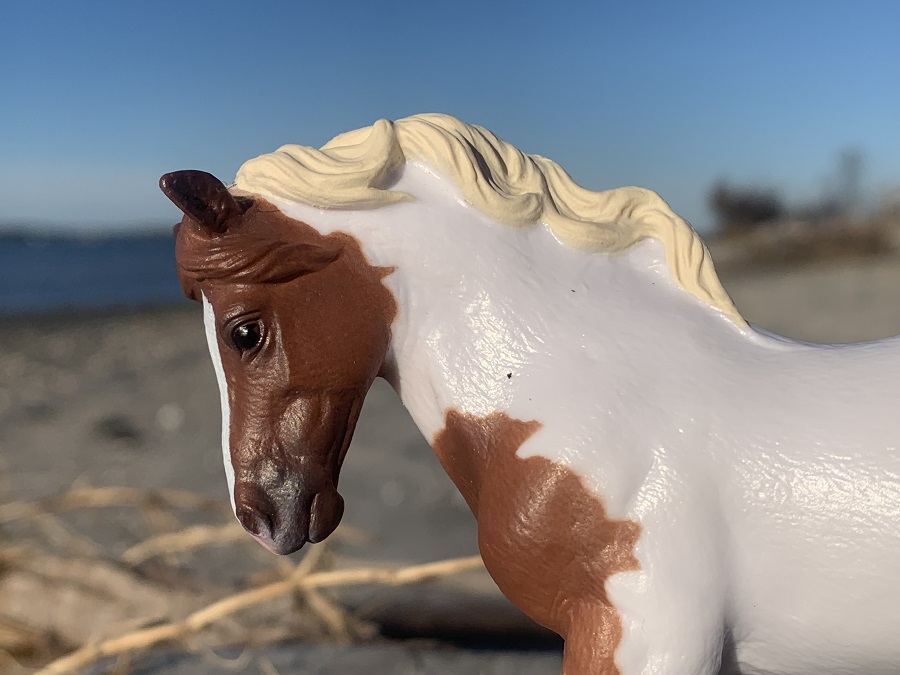
The CollectA pony is presented looking downward and pawing at the ground. The hair on her mane and tail beautifully flowing in such a way that you can imagine this animal pawing the sand with a strong island breeze sweeping through her hair. It goes without saying for a CollectA horse that fine details like the facial features and underlying musculature are all well executed here.

Chincoteague ponies are generally short and stocky with thick legs, adaptations for the harsh island environment that has them contending with strong winds and storms, water, and thick mud. They also often have a bloated appearance thanks to a diet that’s 80% cordgrass, which grows in salt marshes and requires them to drink twice as much freshwater as horses elsewhere. All these breed characteristics are faithfully reproduced in CollectA’s model.
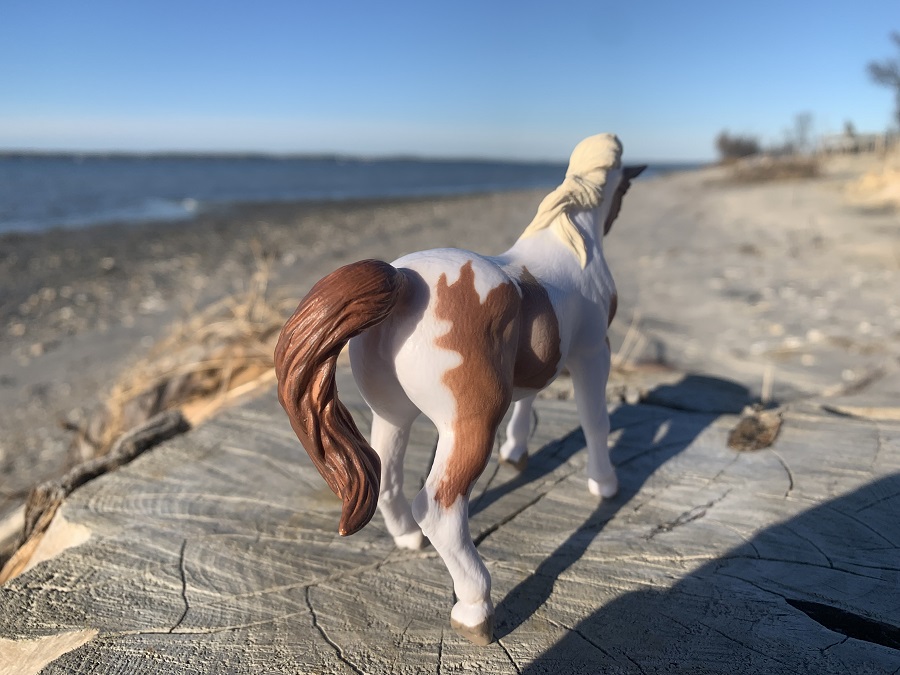
The CollectA figure represents a chestnut pinto mare, being predominantly white with brown splashes and a white stripe down her face. Brown splashes are attractively painted with dark edges and a paler center. Her mane is brown on her forehead and creamy white over her neck and her tail is brown. Chincoteague ponies come in a range of solid colors as well as pinto patterns. Her eyes are shiny black, hooves gray, and the tip of her snout is pink.

Despite living near these horses, the CollectA Chincoteague pony is surprisingly absent from all the local giftshops, even the visitor center for Assateague Island. It seems like a no brainer that they would carry it. Thankfully, it is widely available online and retails for about $8. Being a 2020 release it is currently in production too. Not just a figure for horse breed collectors, the CollectA Chincoteague pony should also appeal to anyone with an interest in feral animals, maritime lore, wildlife of the American east coast, or anyone that might visit or live in the region.

Disclaimer: links to Ebay and Amazon on the AnimalToyBlog are affiliate links, so we make a small commission if you use them. Thanks for supporting us!




Wow, this was an unexpected treat. With your hints during our discussion on the forum, I thought we might be looking at the CollectA Mongolian horse today! I have never heard of this, either the breed and its history nor the figure. Now that I know it’s a feral breed in North America, I might have to add it to my slowly growing horse collection. Not sure yet I want this example, and I am sure I don’t Safari’s, but I’ll have to see what other options there are, or might come up in the future.
Happy to introduce you to the breed! This figure is not a horse I would have picked on appearance alone (although it is a fine horse) but I definitely had to have it.